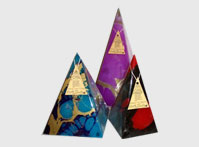|
All our candles have an approximate burn time, however to get the most out of your candles it is recommended to
keep the wick trimmed to 10mm at all times. This allows the candle to burn at its intended rate. If you leave
the wick long it will create a longer than required flame, causing it to burn hotter than necessary, reducing
the candles burn time.
- Remove all stickers and packaging from your candle prior to lighting, even the sticker on the base.
- Always light candles from the base of the wick. It draws the wax up the wick rather than burning the wick down
to the wax to ignite.
- It is advisable to burn a candle for the first time for a minimum of 1 hour. This allows the candle to properly
warm allowing it to burn properly every time you relight it.
- Never leave candles unattended while burning.
- Burn candles away from drafts. A draft will cause your candle to burn unevenly, drip and smoke.
- Keep candles out of strong light. It can make the colour fade.
- Refrigerate your candles for an hour before burning. They will last longer. Wrap them in foil or plastic when
they are in the fridge or the wick will absorb moisture and the candle will not burn properly.
- If you don't have a long match or lighter to reach a deep or high candle, light a piece of uncooked dried
spaghetti and use it to light the candle.
- Use an extinguisher or snuffer to put candles out, or blow with your finger to your lips to block most of the
force of your breath. This will prevent candle wax from being splattered around by the force of your breath. It
is said that this practice is the origin of the gesture "shhhhh" with finger to mouth, used at bedtime
to quiet children and put out the lights.
A short History of candles
The origins of candles can be traced back to paintings on prehistoric cave walls and Egyptian tombs which show the
use of candles, there's also many references to candles in early biblical times. the Historian 'Pliny'
tells of candles in the first century AD being made either of pitch with a wick of flax, or molten wax into
which a rush was dipped.
For thousands of years candles were the main source of light in people's homes. Many early Greek and roman candles
were made of flax thread coasted with wax and pitch, while in other countries candles were made using palm oil,
coconut oil, beeswax and olive oil. In England bayberry wax was refined for the use in making candles. The earliest
dipped candles were made of tallow. Tallow is animal fat, usually obtained from sheep or cow carcasses. It was only
150 years ago that the candle, with the oil lamp, supplied the sole means of artificial illumination in most
dwellings throughout the world.
Electricity has replaces the candle as an important source of light but the candle is still important today for its
role as decoration on festive occasions, for the calm and sanctity it evokes in religious ceremonies and for the
general mood of warmth, relaxation and even romance it creates in our homes.
Interestingly, many people these days, are choosing to use alternative power e.g Solar power. In our area of Nimbin
and surrounds there are many families living with solar power, many of our candles are used to substitute solar
power with beautiful slow burning, smokeless nimbin candles.
|
